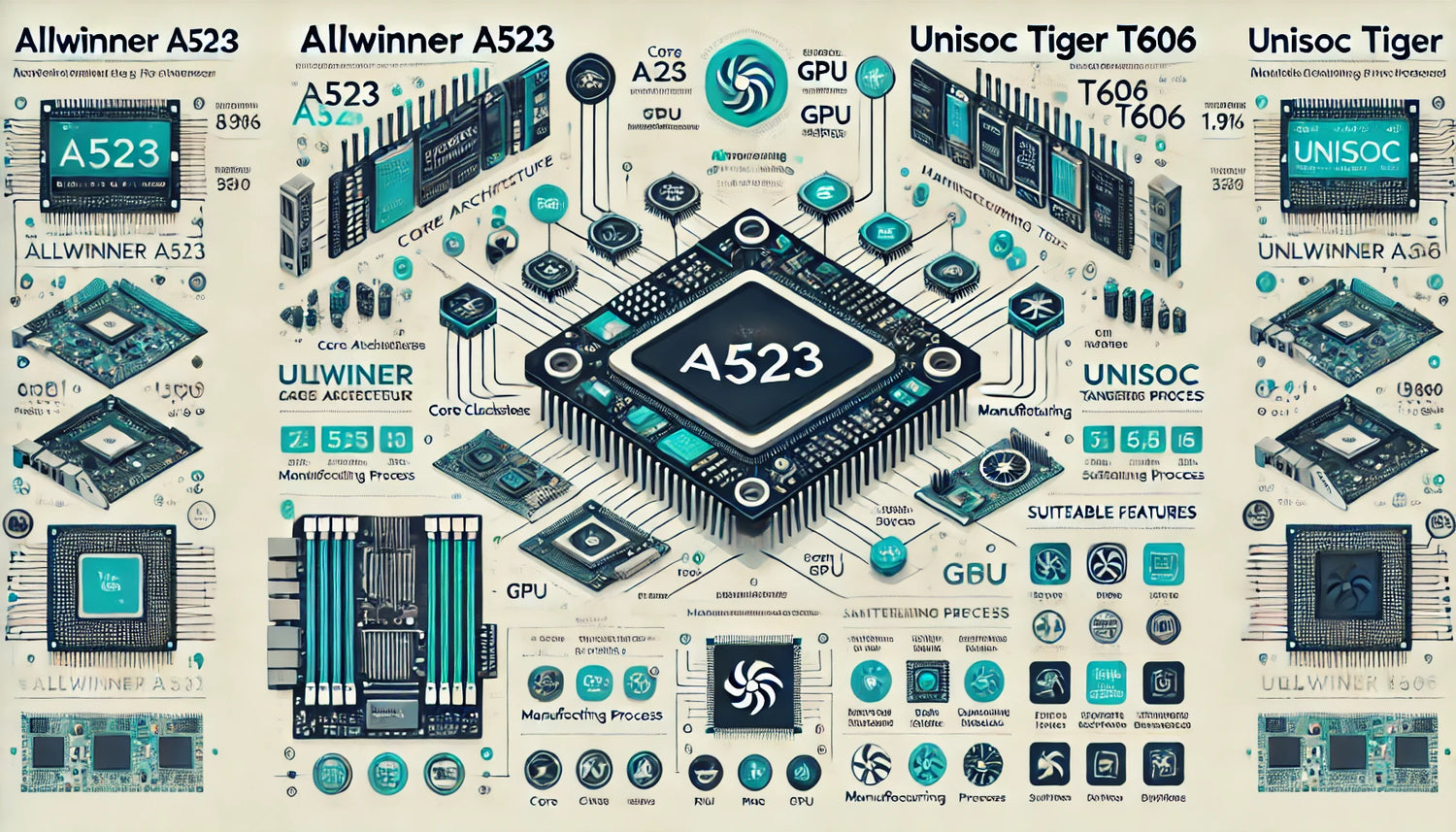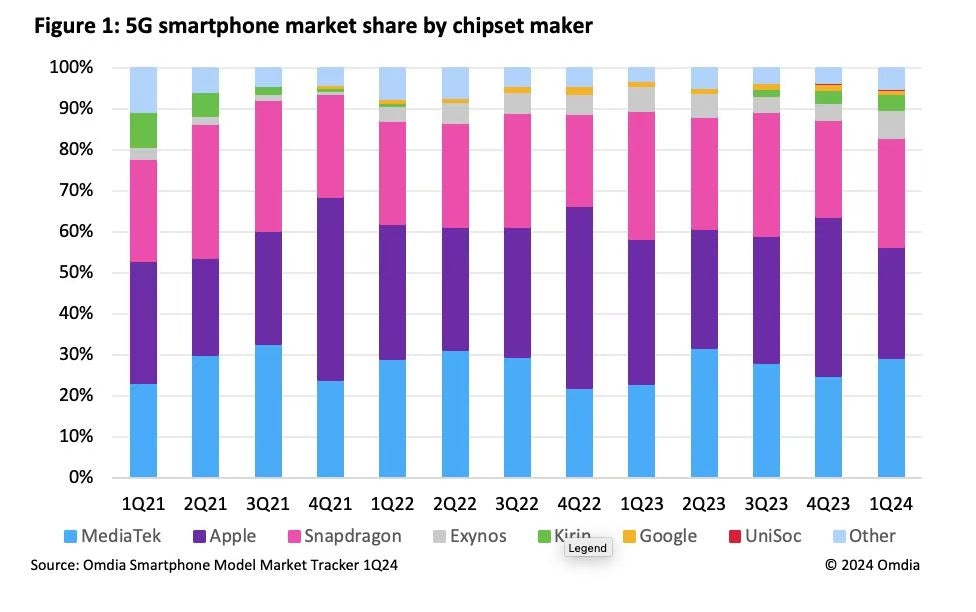In the fiercely competitive mobile processor market, the Allwinner A523 and Unisoc Tiger T606 have garnered attention for their performance and targeted market segments, especially in the $100 to $200 tablet market. They each possess unique architectures and features tailored to different user needs. Let's delve into a detailed comparison to help you understand which processor might better suit your requirements.
Core Architecture and Performance:
Allwinner A523: The Allwinner A523 adopts a configuration with two Cortex-A55 core clusters. One cluster runs at speeds up to 2.0 GHz, while the other slower cluster operates at a maximum of 1.4 GHz. This setup aims to balance performance and efficiency, suitable for mid-range devices, particularly those seeking cost-effectiveness.
Unisoc Tiger T606: The Unisoc Tiger T606 utilizes a more heterogeneous architecture, including two high-performance Cortex-A75 cores with a maximum clock speed of 1.6 GHz, and six power-efficient Cortex-A55 cores, also running at 1.6 GHz. This configuration is suitable for entry to mid-range devices that prioritize a balance between performance and battery life.
Graphics Processing Unit (GPU):
Allwinner A523: The Allwinner A523 integrates an ARM Mali-G57 MC1 GPU, supporting modern graphics APIs such as OpenGL 3.2, Vulkan 1.0, and OpenCL 2.0. It provides sufficient graphics performance for multimedia and light gaming tasks.
Unisoc Tiger T606: In contrast, the Unisoc Tiger T606 features an ARM Mali G57 MP1 GPU clocked at 650 MHz. While it offers graphics performance suitable for daily applications and casual gaming, its focus is more on efficiency rather than pure graphics performance.
Manufacturing Process:
Allwinner A523: Manufactured using a 22nm process, the Allwinner A523 balances performance and efficiency, suitable for a wide range of device applications.
Unisoc Tiger T606: The Unisoc Tiger T606 utilizes a more advanced 12nm FinFET manufacturing process, which typically enhances efficiency and thermal management, suitable for devices requiring higher power efficiency.
Other Features:
Allwinner A523: The Allwinner A523 supports various RAM types (DDR3/DDR4/LPDDR2/LPDDR3/LPDDR4/LPDDR4X), eMMC 5.1 flash storage, PCIe 2.1, USB 3.1 Gen. 1, and Gigabit Ethernet. These features cater to diverse connectivity and storage needs.
Unisoc Tiger T606: The Unisoc Tiger T606 integrates an LTE modem supporting multiple cellular standards (TDD-LTE, FDD-LTE, TDSCDMA, WCDMA, CDMA, GSM), LPDDR4X 1600 MHz memory controller, and a triple ISP, enhancing camera capabilities. These features aim to improve connectivity and multimedia performance.
Conclusion:
Choosing between the Allwinner A523 and Unisoc Tiger T606 depends on your specific requirements. The Allwinner A523 excels in balancing performance and sufficient graphics capability for cost-effective devices. In contrast, the Unisoc Tiger T606, with its more advanced manufacturing process, efficient core configuration, and comprehensive connectivity options, is suitable for devices needing higher performance and multimedia functionality.
Whether you prioritize affordability, graphics performance, or advanced connectivity, understanding these differences will help you choose the processor that best fits your next mobile device.
This comparison analysis highlights how each processor targets different market segments and user needs, ensuring you make an informed decision based on specific requirements.










